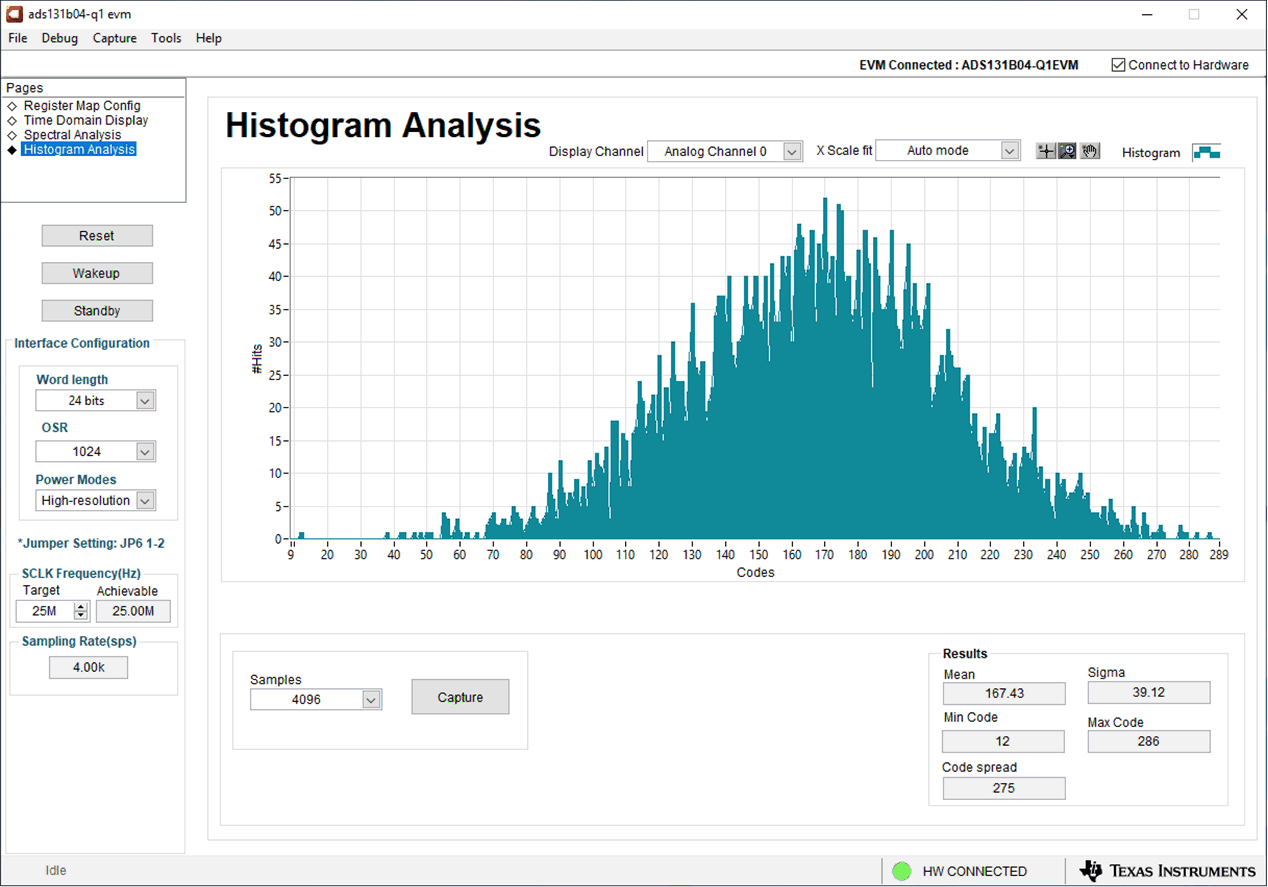SBAU352 June 2020
6.5 Histogram Tool
Noise degrades ADC resolution and the histogram tool can be used to estimate effective resolution, which is an indicator of the number of bits of ADC resolution losses resulting from noise generated by the various sources connected to the ADC when measuring a DC signal. The cumulative effect of noise coupling to the ADC output from sources such as the input drive circuits, the reference drive circuit, the ADC power supply, and the ADC itself is reflected in the standard deviation of the ADC output code histogram that is obtained by performing multiple conversions of a DC input applied to a given channel.
As shown in Figure 16, the histogram corresponding to a DC input is displayed on clicking the Capture button.
 Figure 16. Histogram Analysis Tool
Figure 16. Histogram Analysis Tool